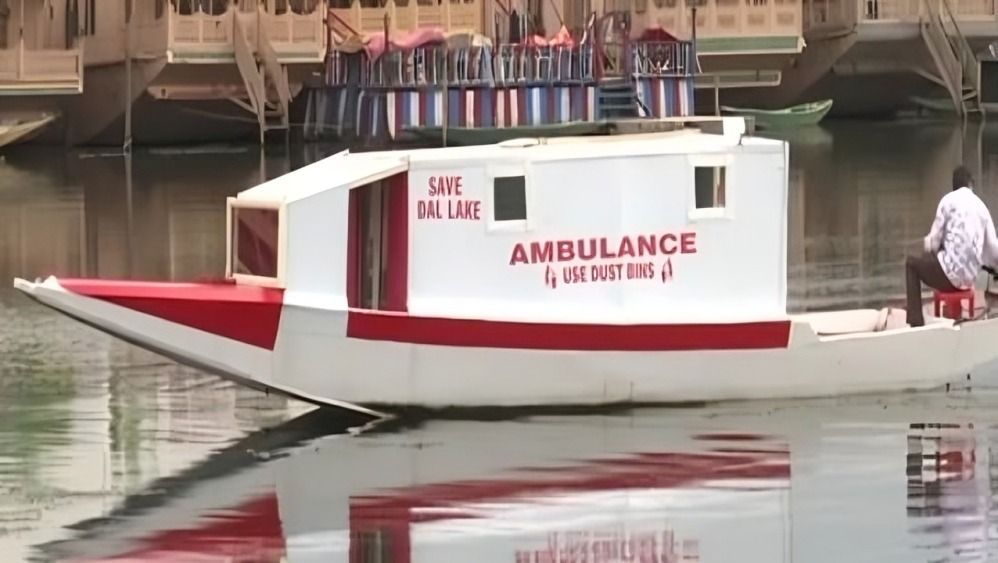
“
Ambulances have come a long way from their humble beginnings as simple carts used on battlefields. The Interesting Facts About Ambulance reveal a fascinating story of innovation and progress, highlighting how these life-saving vehicles have transformed over the centuries. From the Latin roots of their name to cutting-edge modern designs, ambulances have continually adapted to meet the needs of emergency medical services. Join us as we explore the remarkable advancements and intriguing milestones in the evolution of ambulances, showcasing how they have become indispensable in saving lives across the globe.1
1
”
The word "ambulance" originates from the Latin term “ambulare,” meaning “to walk.” This term harks back to earlier times when injured soldiers were transported on wheeled carts, evolving into the modern emergency vehicles we use today. 1
Modern ambulances, while starting as basic vehicles, can cost between $100,000 and $200,000. This high price reflects the advanced medical equipment and technology they are equipped with to provide comprehensive emergency care. 2
Abdul Sattar Edhi's ambulance service, which began in 1948 with just a few vehicles, now boasts a fleet of 500 radio-linked ambulances across Pakistan. His mission, supported by $5 million in annual donations, continues to save lives nationwide.3
Ambulances are not limited to vans; they can also be cars, trains, boats, helicopters, or even bicycles. This versatility allows them to adapt to different environments and provide essential emergency care wherever it’s needed.4

Meet The Hypersport Responder, the world’s fastest first responder ambulance! This UAE-based marvel reaches a jaw-dropping speed of 395 km/h (245.4 mph), showcasing cutting-edge emergency response capabilities.
An ambulance’s lights and sirens are essential for alerting traffic, focusing on visibility and safety rather than the patient’s condition. With up to 40 lights, their primary role is to ensure the ambulance is seen and can navigate safely. 5
The longest ambulance ride ever recorded spanned 3,819 km (2,373 miles) from Antalya, Turkey, to Herning, Denmark. This impressive feat was achieved in August 2014 by Ambulix Fire & Rescue using a Mercedes-Benz Sprinter 312 Diesel.6
Some cities are introducing electric ambulances to reduce emissions and environmental impact. These eco-friendly vehicles use electric power instead of diesel, helping to create cleaner urban environments while maintaining crucial emergency services.7
Dubai’s Center of Ambulance Services operates the world's largest ambulance, stretching 20.03 meters (65.71 feet). This colossal vehicle, capable of treating 123 patients and staff simultaneously, includes an operating theater and multiple intensive care units.8
In the 1400s, Spain saw the birth of the first ambulances, designed for battlefield medical care. However, French surgeon Dr. Dominique Jean Larrey popularized the modern concept in the late 1700s with his “flying ambulances.”9
The first civilian ambulance service began in 1865 in Cincinnati, Ohio, using horse-drawn carriages equipped with medical supplies. This pioneering service laid the groundwork for modern ambulance systems, significantly advancing emergency medical transport.10
Chicago introduced the first motorized ambulance in 1899, powered by an electric motor. Capable of reaching speeds up to 20 miles per hour, it marked a major leap forward in emergency medical transportation technology.11
During the Korean War in 1950, the first ambulance helicopter was used, transforming the speed of transporting injured soldiers. This innovation greatly improved survival rates by providing rapid, aerial medical evacuation.12
In urban areas and developing regions, bicycle ambulances navigate through traffic swiftly. Their compact design allows for quick responses in congested cities, ensuring timely medical assistance even in densely populated areas.13
Ambulances display the word “ambulance” in reverse on their front. This clever design allows drivers ahead to read the word correctly in their rear-view mirrors, ensuring they move aside quickly.14
Ambulances can exceed speed limits by up to 15 km/h during emergencies, but they must still drive safely. Reckless driving can result in being pulled over, just like any other vehicle, to ensure safety on the roads.15
In countries like India, specially designed medical trains offer care and transport for mass casualty situations, including major disasters and emergencies. These trains are equipped to provide extensive medical support on the move.16
The typical lifespan of an ambulance ranges from 150,000 to 250,000 miles, or 4 to 7 years. With proper maintenance and modern technology, such as real-time data collection, some ambulances can last up to 14 years, extending their useful life.17

In regions with extensive waterways, floating ambulances or boats equipped for medical emergencies provide rapid response and care on water. These specialized vehicles ensure timely medical attention in areas where traditional road access is limited.
Some ambulances are equipped with advanced technologies like GPS tracking, telemedicine systems, and onboard computers. These innovations allow for real-time monitoring of patients' vital signs and data transmission to hospitals, improving emergency response effectiveness.18


